Chinese hibiscus (Hibiscus rosa-sinensis), also called the Chinese rose, is the most popular species of the genus Hibiscus of the Malvaceae family among gardeners. The genus of hibiscus unites about 200 species, but the Chinese rose is the most popular in culture. The homeland of such a plant is the northern part of Indochina and the south of China. It was from there that the flower spread over the tropical and subtropical regions of the planet Earth. This plant is so fond of flower growers and gardeners that, for example, in Malaysia it is considered one of the symbols of the country, and it is also depicted there on coins. By the way, they call it Bungaraya there. In those places where climatic conditions are not suitable for cultivating such a flower in the garden, it is grown indoors or in greenhouses.
Content
Brief description of cultivation
- Bloom... It begins in the spring and ends with the onset of autumn.
- Illumination... It can grow in a shaded area, as well as in bright, but diffused light.
- Temperature regime... In the summer, from 18 to 20 degrees, and in the winter months - no colder than 15 degrees.
- Watering... It should be carried out after the top layer of the soil mixture dries out to a depth of 20 to 30 mm.
- Air humidity... It should be tall. Experts advise, in the spring and summer period, to systematically moisten the flower from a spray bottle.
- Fertilizer... Regular feeding is carried out in April – September with a frequency of 1 time in half a month, while it is recommended to alternate organic matter with complex mineral fertilizer. If in the winter the bush continues to bloom, then it is fed with potash-phosphorus fertilizer, while taking ¼ of the recommended dosage.
- Pruning... In the spring before budding.
- Dormant period... It is not pronounced.
- Transfer... While the bush is young, it must be transplanted regularly once a year. More mature plants (starting from five years old) are transplanted less often, or rather, once every 3 or 4 years.
- Reproduction... Seed method and cuttings.
- Harmful insects... Thrips, aphids, whiteflies, mealybugs, spider mites.
- Diseases... Chlorosis, root rot, bacterial blight, brown rot, leaf bronzing and ring spot viruses.
Features of the Chinese rose
Indoor Chinese rose, also called indoor hibiscus, is a small evergreen tree or shrub, the height of which can reach about 300 cm in greenhouse conditions, and up to 200 cm at home.Externally, the foliage is similar to birch leaves, it is glossy, smooth, dark green in color. elongated oval, corrugated, and serrated along the edge. During flowering, the bush is decorated with spectacular single flowers. First, narrow buds are formed, which, after opening, become double or simple flowers in shape similar to wide cups, reaching 8-14 centimeters in diameter. The color of the flowers, depending on the variety, can be yellow, pink, white or red. After opening, the flower withers after 1–2 days, but if the plant is well cared for, then its flowering can last from early spring to late autumn. Indoor hibiscus at home, if desired, can be cultivated as a standard tree.
This culture is not only an ornamental plant. In those countries where it is found in the wild, its flowers are used to make dyes for food and hair, salads are prepared from its young shoots, and its dry fruits are part of famous medicinal teas, for example: Sudanese rose, Hibiscus tea and etc.
Growing a Chinese rose from seeds
Inexperienced flower growers are not very popular with the seed method of propagation of perennial flowers; they prefer to propagate such plants vegetatively, as this is a faster and more effective method. However, the Chinese rose belongs to those plants that are easily propagated both by seed and cuttings. The fact is that hibiscus seeds are distinguished by a very high germination capacity, and crops do not need special care, so it is really very simple to grow such a rose from a seed. It should also be taken into account that the seed material of such a plant remains viable for 6 years.
Sowing seeds is carried out in the last days of February. Shortly before sowing, the seed is immersed in a pink potassium manganese solution for 30 minutes, after which it is thoroughly washed under running water. After that, it is placed in a solution of an agent that stimulates growth (Zircon, Epin or Fumara) for 24 hours, while making sure that it only slightly covers the seeds, otherwise the embryos may die due to a lack of oxygen. Next, the seed is folded into moistened gauze for germination, do not forget to provide it with systematic ventilation. For seeds to hatch, they need a lot of heat and moisture. In this regard, after they are placed in wet gauze, they are placed in a polyethylene bag in which there are several holes, through which air will flow to the seeds. After the sprouts appear, and as a rule, this happens about the third day, the seeds are planted in separate plastic cups with a volume of 0.5-1 liter. They are filled with a substrate consisting of peat, sand and wood ash. Make sure that the main root of the seedling does not wriggle or bend during growth. The planted seeds are covered with a thin layer of soil mixture, and the containers are covered with paper (film) on top.
In order to prevent black leg, seedlings are spilled with a weak solution of Fundazole. For the same purpose, provide the plants with moderate watering. In order for them to grow and develop well, they will need a large amount of diffused light, be sure to protect the seedlings from direct sunlight.
Caring for a Chinese rose at home
Illumination
Chinese hibiscus should be placed in a well-lit place near a window, but make sure that it is not exposed to direct sunlight. If the bush feels a lack of sunlight, then it may not bloom.In the spring and summer, when it is warm outside, it is recommended to move the flower to fresh air, do not forget to provide it with protection from drafts and scorching sun rays.
Temperature regime
In summer, hibiscus grows well at temperatures ranging from 18 to 25 degrees and above. In the winter months, make sure that the room is no colder than 15 degrees, but if the air temperature drops to 10 degrees, then the bush can throw off all the foliage.
Air humidity
This flower needs high humidity. In this regard, in the warm season, it must be systematically and quite often moistened with a spray bottle. Also, the bush should be sprayed during a warm winter. In some cases, a warm shower is recommended for him, which will help wash off all the dust and dirt from the foliage, and also get rid of spider mites. However, make sure that no moisture gets on the buds and flowers, as this will cause stains on their surface and they will fly around. In order to constantly maintain high air humidity, it is necessary to pour expanded clay or pebbles into the pallet and pour in a little water, make sure that the bottom of the container does not come into contact with the liquid.
Watering
For a rose to grow and bloom well, it must be watered properly. For irrigation, use well-settled water at room temperature. This procedure is carried out only after the top layer of the substrate dries out to a depth of 20-30 mm.
Fertilizer
Top dressing is carried out in April – September 2 times a month. To do this, it is recommended to use fertilizer for flowering indoor plants, or you can alternately introduce organic matter and complex mineral fertilizer into the soil mixture. In winter, top dressing is carried out only when there are flowers on the bush; for this, potassium-phosphorus fertilizer is used (1/4 of the dose recommended by the manufacturer).
Pruning
Hibiscus should be pruned in the spring, shortly before transplanting, and should not have buds and flowers on it. Thanks to pruning, you can make the plant bloom ahead of time, and also it will form more flowering shoots, and the bush itself will become very thick and effective. When pruning, cut off those shoots that are stretched, dried or bare, while the remaining ones are shortened by ½ part. Places of cuts must be smeared with garden varnish so that juice does not flow from them. Cut shoots can make good cuttings from which new bushes can be grown.
In order to rejuvenate an adult bush, all its shoots must be cut at a height of 15 centimeters, but make sure that there is at least one bud on each segment. After the young shoots begin to grow actively, it will be necessary to cut off all the weak ones, while only the strongest and completely healthy branches should remain. In the summer, the bush is cut off again, as a result, flower buds will form on the regrown shoots only in September. But the lush flowering of the rejuvenated bush will continue until spring.
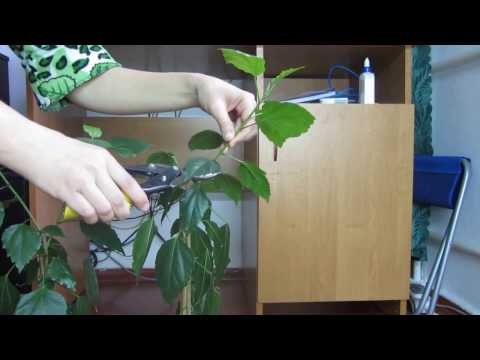

Watch this video on YouTube
Chinese rose transplant
A properly sized planting container should be a little tight. If you choose an excessively large pot, then the rose will actively grow greenery and shoots to the detriment of flowering. During transplanting, it should be borne in mind that the new container should be only 20-30 mm larger than the old one.
If the bush is still young, then it needs systematic transplants, which are carried out once a year. But after the plant turns 5 years old, they begin to transplant it much less often, or rather, once every 3 or 4 years. Old hibiscus plants do not need to be replanted, but they will have to replace the top layer of soil mixture in a pot 20–30 mm thick annually.
For planting and transplanting, an earth mixture is used, which includes leaf, sod and humus soil, and also sand (2: 2: 1: 1). To transplant young specimens into the substrate, you still need to add 2 parts of peat soil.In order to prevent stagnation of liquid in the root system, a good drainage layer must be made at the bottom of the planting tank; for this, you can use pieces of brick, expanded clay or fragments of ceramics. In order to protect the plant's root system from damage, the transplant must be carried out by the transshipment method.


Watch this video on YouTube
Post-flowering care
The Chinese hibiscus does not have a pronounced dormant period. However, if you need the bush to rest, you can enter it into a dormant state with your own hands; for this, watering is reduced to the required minimum, but they do it gradually. After all the leaf plates have flown around from the plant, it is necessary to carry out rejuvenating pruning, while each shoot is shortened to 15 centimeters. Then the bush is removed for the winter in a shaded and cold (from 10 to 12 degrees) place. Watering should be rare, and the surface of the substrate should be covered with a paper bag or mat, which will allow the soil mixture to remain moist for a longer time. With the onset of spring, the bush is transferred to a well-lit place (the light should be diffused), after which they begin to gradually increase the abundance and frequency of watering to the required rate, this helps to stimulate the growth of new shoots.
Reproduction of the Chinese rose
It has already been said above that the Chinese rose can be propagated quite easily by seed. You can also do this by cuttings. For example, as cuttings, you can use those shoots that were cut from a bush during spring pruning. The cut sites are treated with a root growth stimulating agent (Heteroauxin or Kornenvin), then the cuttings are placed in a glass of water for rooting or planted in a soil mixture consisting of peat and sand, and covered with a transparent glass jar on top. The roots should appear after 20-30 days. When this happens, the cuttings are planted in a soil mixture suitable for Chinese hibiscus, and they are also pinched, so that the bushes will grow more lush and branched. After about 2 months after planting, when the cuttings have taken root, they may have flowers.
Also, the rose can be propagated by apical cuttings, which must have 2 or 3 internodes. They are harvested in July or August.


Watch this video on YouTube
Chinese rose pests and diseases
Pests
Most often, the Chinese rose suffers from such harmful insects as aphids, thrips and spider mites. As a rule, they settle on those bushes that have been weakened by improper care, and the most common cause of pests is excessively low humidity in the room.
A bush affected by pests must be systematically moistened from a sprayer, using well-settled water at room temperature. Also, do not forget to put the pot on wet expanded clay, poured into a pallet. If there are not very many insects, then the bush is sprayed 2 times with a half-month break with the infusion of hot pepper, which is mixed with a small amount of liquid soap. In the event that there are a lot of pests on the flower, you will have to spray it with Actellik's solution (15 drops of the drug per 1 liter of water).
Possible problems and diseases
If the rules of care are not followed or under unsuitable conditions for growing with the plant, various problems may arise, for example:
- Yellow foliage due to chlorosis... As a rule, the foliage changes its color to yellow when chlorosis appears, which develops due to the fact that the water for irrigation contains a lot of chlorine and calcium. To save the bush, watering should be carried out only with well-settled water, while iron chelate will need to be added to it (the required dosage should be indicated in the instructions for the drug).
- The foliage is yellower due to overflow... If well-settled, cold water is used for irrigation, but the foliage on the rose still turns yellow, then this may be due to the fact that liquid constantly stagnates in the substrate.If there are not very many yellowed leaves, then the situation can be corrected by reducing watering, or it is better to replace it for a while by moistening the bush from a spray bottle. If there is a massive yellowing of the foliage, then it is necessary to transplant the bush into a fresh substrate as soon as possible. During transplanting, carefully inspect the roots of the bush and cut off any that have rot.
- Foliage turns yellow due to poor lighting... If the bush does not have enough light for normal growth and development, then it can also massively begin to turn yellow and fly around the leaf plates. Sometimes there is a real leaf fall. There are other reasons why hibiscus leaves can turn yellow.
- Flying around foliage... Leaf plates can fall off not only due to lack of light, but also due to sudden changes in temperature or from a draft. To save the bush, it is enough to start caring for the plant correctly and provide it with all the necessary conditions for normal development and growth. However, if only a few leaves have fallen, then you do not need to worry about this, since this is normal for deciduous trees.
- The rose dries... If the bush receives a sufficient amount of liquid, but its foliage dries up anyway, then this may be its reaction to being moved to another place. Leaves can also dry up near a bush that has been exposed to low temperatures. In this case, it will take him time to warm up and bounce back.
- Withering bush... As a rule, this is due to the fact that the bush does not have enough water. It can also happen with a recently transplanted bush that has not yet had time to take root. It can also be associated with rotting roots. In this case, remove the flower from the pot, remove the remaining soil mixture from its root system and immerse it in a weak solution of potassium manganese for 30 minutes. The treated plant is planted in a new, not very large pot, which is filled with a light soil mixture (vermiculite must be added to a soil mixture suitable for hibiscus). If everything is done correctly and in a timely manner, then you may be able to save the flower.
- Lack of flowering... A rose may not bloom for several reasons, but the most common of them is overfeeding the plant with nitrogen, especially if the bush is completely healthy and has fur foliage. Flowering may also be absent due to poor lighting, with insufficient watering during intensive growth, and also due to wintering in an excessively warm place. In order for the Chinese rose to begin to bloom, it is necessary to correct all the errors in the care, and also to exclude all the above reasons.


Watch this video on YouTube
Signs associated with the Chinese rose
Since the Chinese rose is very popular among flower growers, there are many different rumors and incredible stories about it that look more like fiction. Some of these fables are mutually exclusive, for example, in one source it is said that this flower is “muzhegonnom” and it can cause the soonest divorce of spouses, and in another source, on the contrary, it is advised to purchase this plant for a single woman, because it attracts house of men. There are those who call hibiscus "the flower of death", they argue that if the bush begins to bloom out of time, this is a harbinger of the imminent death of a loved one or a relative of the owner of the plant. If mass foliage begins to fall, then this is a sign that very soon someone from the household will become very sick.
An interesting fact is that all these superstitions and omens associated with the Chinese rose exist only in Russia, while in other countries it is considered just a very spectacular ornamental plant.
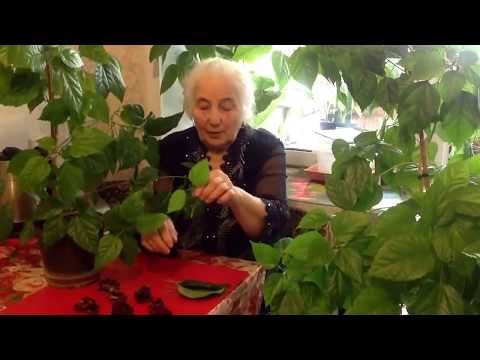

Watch this video on YouTube
Where can you keep a Chinese rose at home?
According to feng shui, a Chinese rose cannot be grown at home because it is capable of absorbing energy. If you want to decorate your home with hibiscus, then only you can decide whether to believe it or not. Alternatively, the flower can be placed in the living room, where it will look very attractive, and can also purify the air from harmful substances.And least of all a bedroom and a children's room are suitable for him.

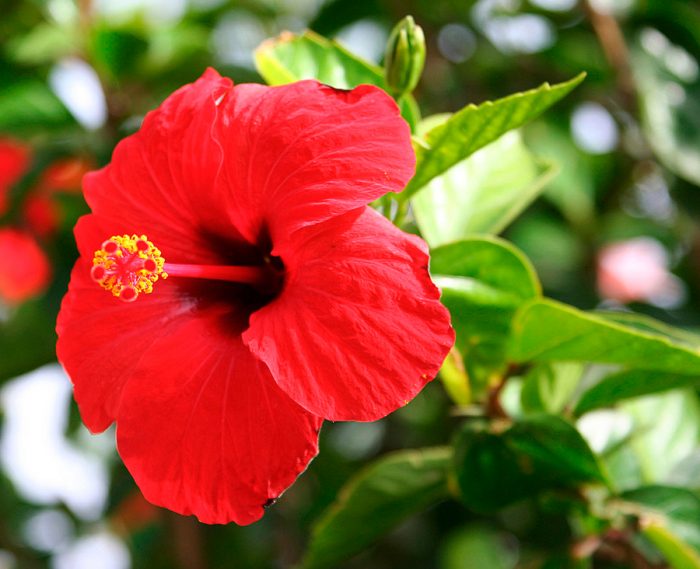
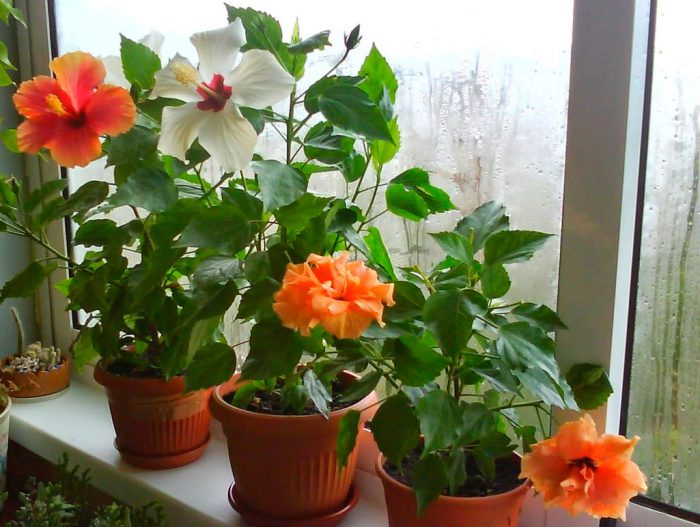

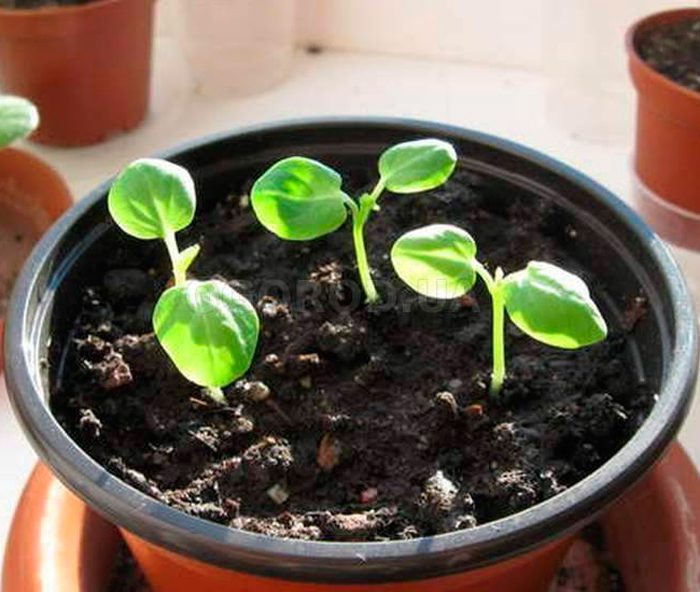
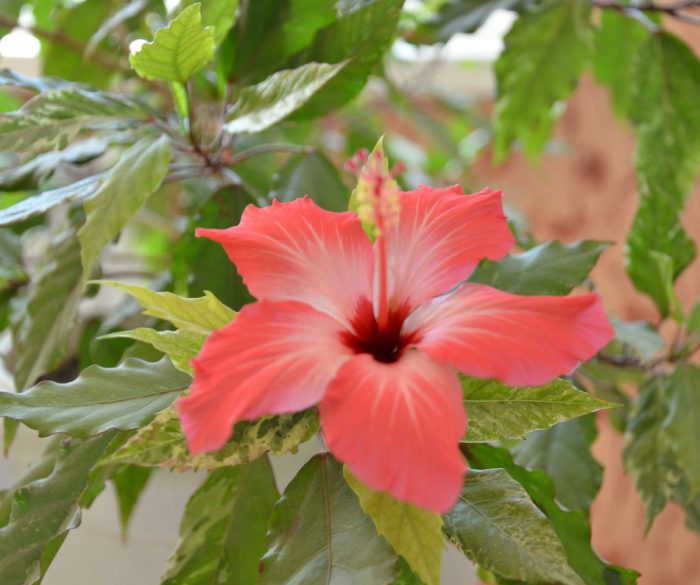
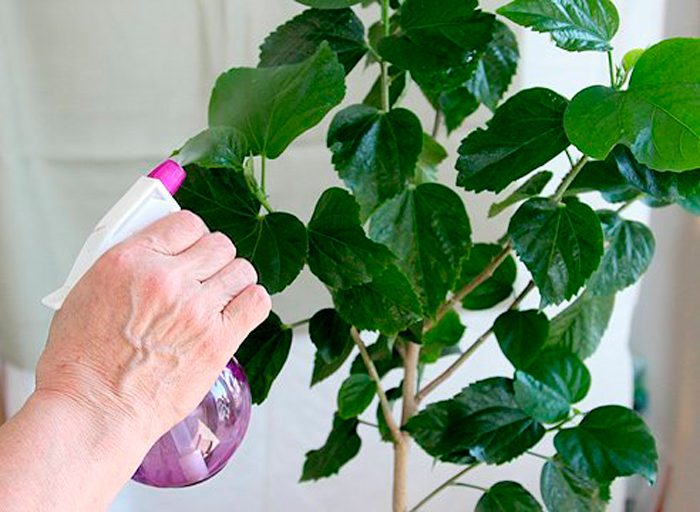
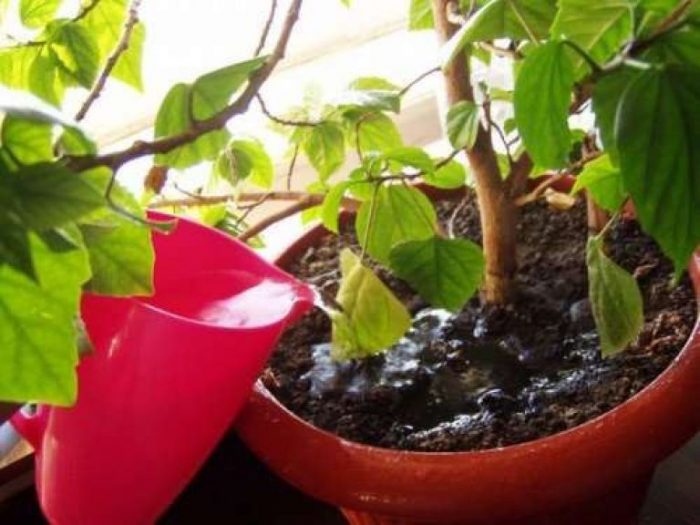
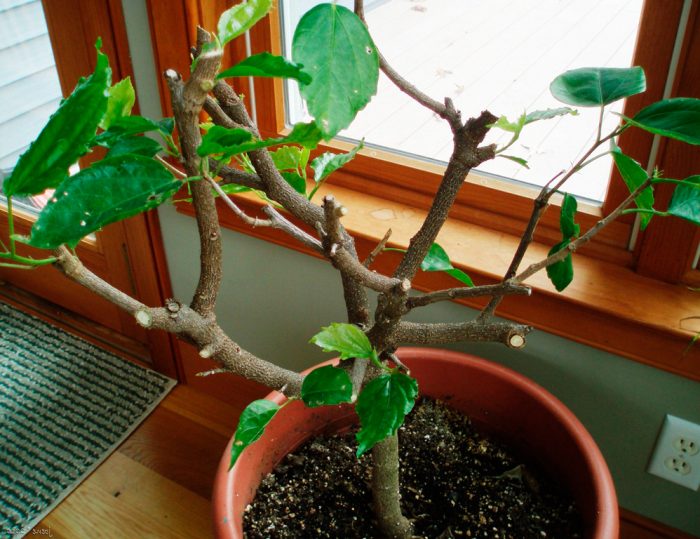
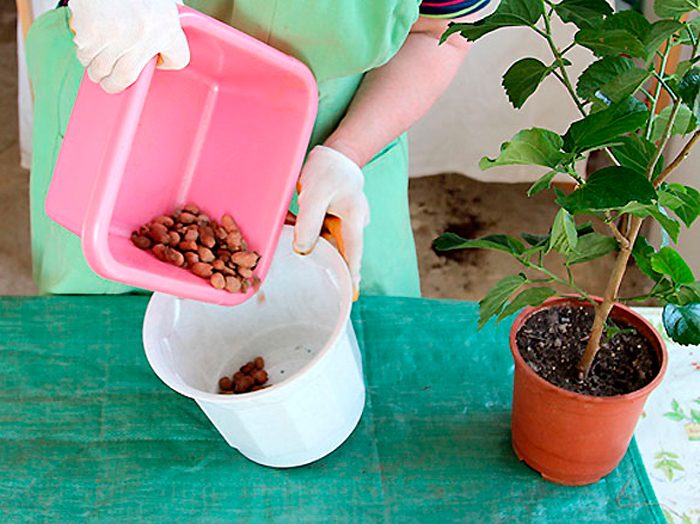

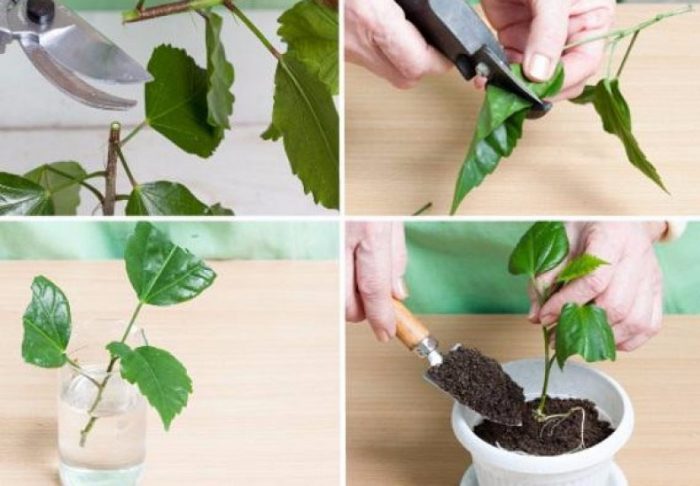
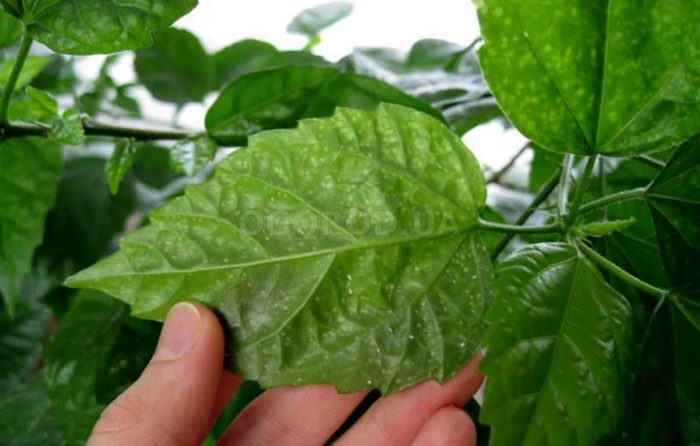
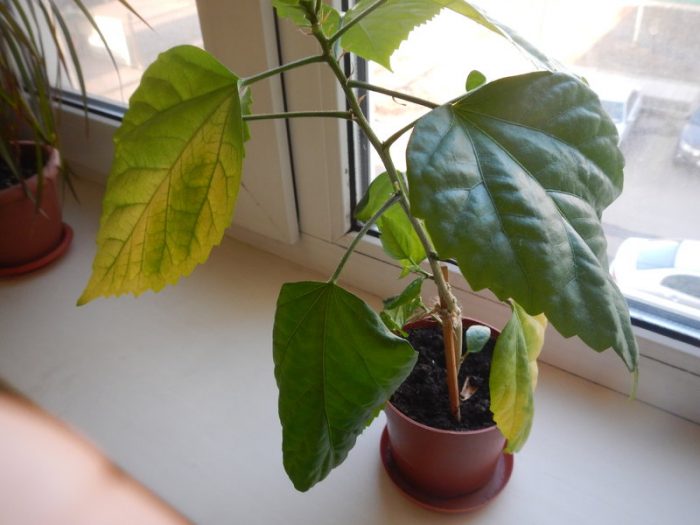
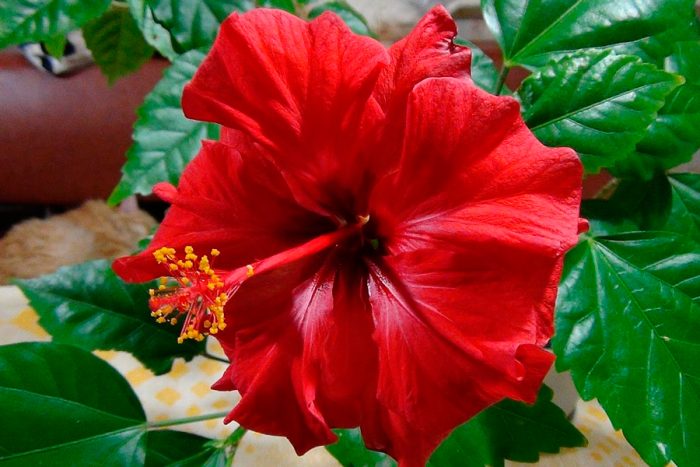


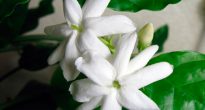


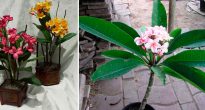

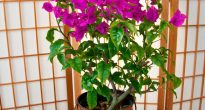


I bought a hibiscus with buds, transplanted it at home, a beautiful plant stood for two weeks and suddenly the leaves began to dry up and fall off. I sprayed it 2 times a day, watered it as the soil dries up. Either I believe in omens, or overdone it, but the rest of the flowers are in order.
My hibiscus does not bloom at all, he is 10 years old, he is big, lush, beautiful. Light is watered a lot correctly, sometimes / once a month / watered, but does not bloom. How to be?
Buy fertilizer for flowering houseplants. Will bloom very actively. And place the flower in a room with a window to the east.
Dear, flower growers help to save a wonderful tree!
A colleague donated a hibiscus (80 cm). The leaves were dry (not yellowed) and almost all fell off. I moistened the earthen ball well and cut off the dried branches. A week later, the plant has risen and now everything is in leaves.
BUT!
Some of the leaves have begun to curl around the edges and deform (looks like a thin cloth after an iron).
Help me please!
I transplanted hibiscus into a more spacious pot, drainage, soil, everything as expected, fertilizer for flowering. The plant has thrown buds and is actively blooming. But! the leaves began to turn white! What to do? What is it, how to help?